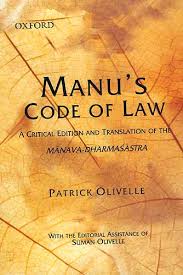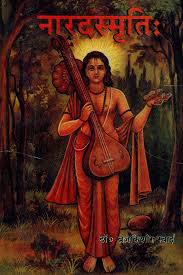Authored by Judge C. G. Weeramantry, former Vice President of the International Court of Justice and former judge of the Supreme Court of Sri Lanka. This was first published in Sunday Times, Sri Lanka.
Hinduism has one of the oldest of legal systems and from its very earliest days has generated an enormous volume of sacred and scholarly literature. It is remarkable to see the wealth of writing there has been in this system over the centuries on matters of government, law and the judicial process.
Detailed treatises on government and law
Hindu law consisted both of sacred texts (Shruti) and commentaries (Smriti). The Shanti Parva, for example, was a gigantic work dealing with the duties of a king and his government. It covered matters of law, administration, rights, justice and dispute resolution.
There are hundreds, if not thousands, of Smriti texts constituting a tremendous juristic literature. Collections and translations of the dharmasastra texts have appeared in Europe since the 19th century, thus bringing to the western world, for the first time, a glimpse of the rich juristic and sacred literature of Hinduism. The translation of the Laws of Manu in 1794 by Sir William Jones revealed to the western world its first glimpses of the vast range of legal literature contained in Hinduism.
Kautilya’s Arthashasthra, was a remarkable legal treatise dealing with royal duties. Written in the 3rd century BC, many centuries before such studies appeared in the West, it contains a surprising degree of detail about the duties of kings. It includes a reference to thirty or more superintendents whom he should appoint to deal with every aspect of the welfare of the skate ranging from the protection of canals, lakes and rivers to the regulation of mines and the conservation of forests.
This monumental treatise also contains passages relevant to the judiciary, describing in detail some aspects of judicial misconduct which are not without practical relevance even today. The punishments they prescribe for the judge’s misconduct are not perhaps enforceable in modern legal systems but the principles of conduct they emphasise are useful reminders regarding the behaviour expected of a judge on the bench.
The Code of Manu, comprising several hundreds of precisely worded sections, and dating back to the 3rd century BC, had specific provisions regarding judicial proceedings. It specified (section 118) that evidence and judicial proceedings should be free from covetousness, distraction, error, friendship, lust, wrath and ignorance. This Code also states that if a judgment is found to be based on false evidence it is the court’s duty to reverse the judgment.
 The Code of Manu was the subject of many commentaries. Outstanding among them was the commentary of Narada, who wrote around the 4th century A.D. It is interesting to note that Narada tells us that Manu had composed 100,000 shlokas (verses) in 1,080 chapters. This vast work was reduced by later commentators to 12,000 verses, 8,000 verses and thereafter 4,000 verses.
The Code of Manu was the subject of many commentaries. Outstanding among them was the commentary of Narada, who wrote around the 4th century A.D. It is interesting to note that Narada tells us that Manu had composed 100,000 shlokas (verses) in 1,080 chapters. This vast work was reduced by later commentators to 12,000 verses, 8,000 verses and thereafter 4,000 verses.
It is amazing that such a vast quantity of scholarship should have gone into justice-related questions so many centuries ago.
Modern commentators have drawn attention to the outstanding nature of this law-related literature. For example, J.D.M. Derrett (Hindu Law Past and Present, A Mukherjee & Co Private Ltd, Calcutta, 1957, pp 12,14) refers to the fact that it was compiled by great jurists in the period starting from about 800 BC and that the authors brought to bear on their work ‘a selective acumen sharpened by doctrinal and scholastic enthusiasm’. He refers also to ‘the great brilliance of the early shastrakaras (creators of rules) of whom Manu was the most eminent’. All these works provide the background to Hinduism’s vast literature concerning the judicial process and the duties of judges.
The concept of righteousness
Hindu civilisation is pervaded by the all-embracing concept of Dharma which straddled the whole spectrum of moral, religious, customary and legal rules. Dharmishta conduct (righteousness) was required at every level. Dharmishta thought and concepts dominated the judicial process as well.
All judicial decision making was under the overarching principle of righteousness. Hindu literature on the subject of dharmista or righteous conduct is truly voluminous. The Bhagawad Gita summarises its essence in categorical form by observing that “Men who put no faith in this law of righteousness (dharma), fail to reach me and must return to the road of recurring death” (ix.3).
Dharmista principles covered every field of human activity and comprised a set of duties towards all, ranging from the universe itself to the humblest creatures on earth. The conduct of a judge, engaged as he was on one of the noblest forms of human activity, attracted its all-pervading principles into every detail of judicial conduct — thought, speech, handling of witnesses, relationships with lawyers and decision-making, among others. Any failure by a judge to follow the rules of righteousness was looked upon as a total betrayal of their trust, and indeed as sinful.
Qualifications of judges
Hindu law was very particular that the judges should be equipped for their task both through the requisite knowledge of law and the requisite standard of conduct. Narada’s commentary on courts of justice states that:
“The members of a royal court of justice must be acquainted with the sacred law and with rules of prudence, noble, veracious and impartial towards friend and foe…. Justice depends on them, and the king is the fountain head of justice.”
It will be seen that the requirements spelt out covered both scholarship and wisdom on the one hand and personal integrity and impartiality on the other.
All this was required because the judges were looked upon as discharging one of the most important duties of sovereigns.
The role of the judge
The Code goes on to compare the role of the judge to the role of a surgeon. The surgeon’s mission is to do what he can using his skill to relieve the patient from his suffering. The person who comes to the judge for relief is similarly a person smitten by a problem, namely the problem of injustice. It is the judge’s role to use his knowledge and skill to relieve the person from his suffering by delivering justice to him.
(III. 12): “As an experienced surgeon extracts a dart by means of surgical instruments, even so the chief judge must extract the dart (of iniquity) from the lawsuit.”
The judicial obligation is described rather dramatically in terms that;
“Where justice, having been hit by injustice, enters a court of justice, and the members of the court do not extract the dart from the wound, they are hit by it themselves.” (III. 9)
Some judicial shortcomings
This detailed attention to the qualifications and duties of judges resulted also in an analysis of judicial shortcomings. Kaultiya in his treatise spells out that:
“When a judge does not inquire into necessary circumstances, inquires in to unnecessary circumstances, makes unnecessary delay in discharging his duty, postpones work with spite, causes parties to leave the court by tiring them with delay, evades or causes to evade statements that lead to the settlements of a case, helps witnesses, giving them clues, or resumes cases already settled or disposed of, he shall be punished with the highest amercement.”
All this has much relevance to the judiciary of today because delay is one of the most vitiating factors in the modern administration of justice. Today, far more than in the time of Kautilya, delay involves expense in the form of legal fees, loss of employment, travel expenses and incidental expenses. What Kautilya observed more than 2000 years ago acquires increased relevance in our time.
Indeed Kautilya states that litigants even in his time abandoned their cases owing to delay. The number of poor litigants in our time who abandon their cases owing to delay has never been adequately researched, but is quite considerable.
It is interesting also to note that Kautilya prescribed a punishment for judges who cause unnecessary delay. Modern legal systems are totally without such a controlling factor. The maxim “justice delayed is justice denied” was thus clearly recognised more than two thousand years ago.
Legal procedure
Narada’s commentary observes that the two sources a judge uses for determining a matter are testimony of witnesses and the documents. There are further sections on legal procedure, dealing with the handling of evidentiary material. Its detailed provisions relating to vitiating factors show the importance of total integrity in every aspect of the judicial process. It is amazing to know that Chapter VIII, of the code, dealing with justice, has 420 sections, thus indicating that this code of the 3rd century BC was itself based on centuries of prior experience.
 There are also provisions dealing with the judges’ duty to intervene when injustice is committed, failing which they commit an offence. The tremendous responsibility of the judiciary for injustice done in judicial proceeding is illustrated by a provision which reads as follows:
There are also provisions dealing with the judges’ duty to intervene when injustice is committed, failing which they commit an offence. The tremendous responsibility of the judiciary for injustice done in judicial proceeding is illustrated by a provision which reads as follows:
“Where justice is destroyed by injustice, or truth by falsehood, while the judges look on, they shall also be destroyed.”
Active participation
The Code of Manu goes on to observe in terms very relevant today, especially in the context of courts comprising more than one judge:
(III. 10): “Either the judicial assembly must not be entered at all, or a fair opinion delivered. That man who either stands mute or delivers an opinion contrary to justice is a sinner.”
(III. 11): “Those members of a court who, after having entered it, sit mute and meditative, and do not speak when the occasion arises, are liars, all of them.”
These are passages full of relevance to judges who do not take a sufficiently active part in the hearing, especially when they are members of a multiple bench. All too often one hears a statement “I agree” without sufficient evidence of participation in the process of decision-making. All judges need to play an active role in the consideration of the case.
They should make their own input into the decision. If they disagree, they should write their dissenting opinions, giving their reason for disagreement. If they agree with the majority and consider special aspects of the case to be particularly important, they should write concurring opinions explaining the points they consider to be of importance.
Culpability of judges
It is interesting also to note religious overtones in Hindu literature to the effect that a judge who fails to dispense justice in a given case is a sinner.
(III. 12): “One quarter of the iniquity goes to the offender; one quarter goes to the witness; one quarter goes to all the members of the court; one quarter goes to the king.” – ((Sacred books of the East, Max Muller (ed) Motilal Banrsidass, 1965, Vol XXXIII (The Minor Law Books) pp. 2,3,5,16, 37-40)
This culpability is not only culpability in the spiritual sense. The Hindu law books prescribe in detail the punishments that should be meted out to judges who fail to perform their duties. Judicial misconduct was indeed a punishable offence.
Improper conduct on the bench
Improper judicial conduct is dealt with in detail in a manner which even modern treatises do not spell out specifically.
Judges through their dominant position in court are able to act in an overbearing manner towards lawyers, witnesses and others, and may not often realise the damage they are doing both to the image of the court and to the immediate case before them. Kautilya spells this out in detail:
“When a judge threatens, browbeats, sends out, or unjustly silences any one of the disputants in his court, he shall first of all be punished with the first amercement. If he defames or abuses any one of them, the punishment shall be doubled. If he does not ask what ought to be asked, or asks what ought not to be asked, leaves out what he himself has asked, or teaches, reminds, or provides anyone with one of the previous statements, he shall be punished with the middlemost amercement.”
“When a judge does not inquire into necessary circumstances, inquires into unnecessary circumstances, makes unnecessary delay in discharging his duty, postpones work with spite, causes parties to leave the court by tiring them with delay, evades or causes to evade statements that lead to the settlement of a case, helps witnesses, giving them clues, or resumes cases already settled or disposed of, he shall be punished with the highest amercement.” (The Arthashasthra, R Shamasastry, (trans), Mysore Printing & Publishing House, 1967, pp 254-5)
 So weighty is the responsibility attaching to the judicial office at the level of religion and morality that the judge who fails to discharge his judicial responsibility in the highest possible manner attracts not only condemnation by the state but also the strongest condemnation that religion could specify. The Panchatantra goes so far as to say, “If a man decides unjustly through pride or through greed, through anger or through fear, he goes straight to hell”. (See Vishnu Sharma, Pancha Thantra Penguin Books India, 1993, p.295, Verse 98 from Book III)
So weighty is the responsibility attaching to the judicial office at the level of religion and morality that the judge who fails to discharge his judicial responsibility in the highest possible manner attracts not only condemnation by the state but also the strongest condemnation that religion could specify. The Panchatantra goes so far as to say, “If a man decides unjustly through pride or through greed, through anger or through fear, he goes straight to hell”. (See Vishnu Sharma, Pancha Thantra Penguin Books India, 1993, p.295, Verse 98 from Book III)
Due consideration of evidence
The literature of Hinduism, apart from philosophical analyses of the judicial function, illustrates the importance of correct judicial decisions by many allegorical stories. An illustration of this is the story of the monkey king who misjudged his brother without hearing the evidence. This resulted in the splitting of the monkey tribe into two groups who were in conflict with each other for a long period. The Ramayana relates how Rama, who befriended the monkey clan, solves the problem by drawing attention to the miscarriage of justice that has resulted from an improper decision which had not taken account of the relevant evidence.
Justice related stories of this sort abound in Hindu literature and they were later used by scholars to illustrate the importance of principles of justice and the resulting damage to the entire community through a deviation from those principles.
Sacrosanct nature of judicial obligation
Hinduism thus treats the judicial responsibility as a sacred function and a solemn trust linked not only to the provisions of secular law but also to divine teachings and commandments. This imposes on the judge the highest possible standards of integrity, dedication, scholarship, righteousness and concern for the afflicted – all of which are part of a royal duty discharged on behalf of the king by the judge. The Judge therefore cannot afford to deviate in the slightest measure from the highest standards of service expected of this distinguished office.
Conclusion
Many centuries of scholarship, philosophical, historical, literary, religious and juridical have thus gone into the analysis of judicial responsibility in Hinduism. There are profound lessons to be gained from this system even for the judges of today in performing their trust, which is one of the highest that human beings can be called upon to discharge.
IndiaFacts Staff articles, reports and guest pieces

